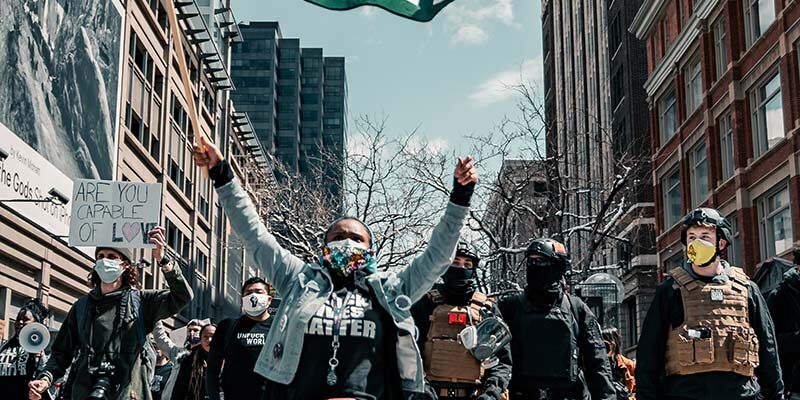Population Prospects 2022 of United Nations has estimated that on November 15, 2022 there will be eight billion people on the planet that would move up to 8.5 billion in 2030, 9.7 billion in 2050 and 10.4 billion in 2100. Since 1990, the global average lifespan has increased by over nine years and in 2019 it was 72.8 years.[1] As of now, India is the world’s second-most populous country after China. In 2023, India is projected to surpass China as most populous country. As per the 2011 census, population of India was 1,210,569,573.[2] Statistical errors notwithstanding, private consultancies have projected India’s population to have already surpassed that of China. UN report cited vulnerabilities to infrastructure, jobs, economy, governance, social cohesion and other factors that emerged owing to growing population. Various countries faced social issues such as child or early marriages, migration, lack of family planning, etc., as well as imbalance in population that resulted in concerns like religious conversions, inequality, social violence, etc. All of these strongly correlated with population’s growth. In the past, population imbalance has brought about division in numerous nations including India. Afghanistan, Bangladesh, Bhutan, China, Maldives, Myanmar, Nepal, Pakistan, and Sri Lanka are immediate neighbours to India. Infiltration has been seen in border regions as no uniform population policy was pursued by the Indian Government. In response to a query in the Parliament, Indian Ministry of Home Affairs has stated that the border between India and Bangladesh has seen greatest documented incidences of cross-border infiltration into India. In a written reply, Minister of State in the Ministry of Home Affairs, Nisith Pramanik said, “128 infiltrations reported along Pakistan border, 1787 along Bangladesh border, 25 along Nepal border, 133 along Myanmar border while nil at China and Bhutan border.”[3] Five Indian states of West Bengal, Assam, Meghalaya, Mizoram, and Tripura surround Bangladesh whose people made most attempts to infiltrate into India. The invasion drives illegal immigrants and alteration of geographical boundaries resulting in serious national security concerns. The imbalance and population growth can be addressed through public education and stricter regulatory enforcement. To produce a uniform population policy, the government and policymakers must adopt significant and pervasive actions. In addition, it’s essential to make sure that the laws that are already in place are being adhered to. In a recent national meeting held in Prayagraj, Uttar Pradesh in India, Rashtriya Swayamsevak Sangh (RSS) – a Hindu centric organization –Sarkaryavah (General Secretary) Dattatreya Hosabale expressed concern about India’s population imbalance and emphasized the importance of strict enforcement of anti-conversion laws and formulation of a uniform population policy.[4] CHALLENGES DUE TO POPULATION IMBALANCE One of the top risks is the enormous population expansion apart from infiltration, illegal entry of people from neighbouring countries in search of livelihoods, work opportunities and permanent settlement. The threat has increased owing to political and social instability that fuelled imbalanced and unregulated population growth. Figure: It shows the growth rate and imbalance in population. The percentage of population increase for major religions has decreased over the past ten years (2001–2011). Hindu population decreased from 19.92% to 16.76% over the previous decade while Muslim population decreased from 29.52% to 24.60% (Even after this, the Muslim population is growing at the fastest rate) over the same period. Sikh population growth was 8.4 percent compared to 15.5% for Christians. Jainism is at 5.4 percent and Buddhism is at 6.1 percent.[5] Though overall population growth slowed down, uneven expansion of population from some religions remains problematic. Governments and society must therefore confront the issue of demographic imbalance in unison. Religious Conversions After independence, the Indian Parliament proposed a variety of anti-conversion laws, but none of them were adopted. The Indian Conversion (Regulation and Registration) Bill was initially submitted in 1954 with the intention of ensuring “the licence of missionaries and the registration of conversion with government officials,” but the bill was unsuccessful in gaining the support of majority members. After that, in 1960, the Backward Communities (Religious Protection) Bill was presented with the intention of prohibiting Hindus from converting to “non-Indian religions,” which the bill defines as include Islam, Christianity, Judaism, and Zoroastrianism. The Freedom of Religion Bill was introduced in Parliament in 1979. Lack of political support prevented Parliament from passing these measures which called for “formal limitations on inter-religious conversions.”[6] According to Indian Union Law Minister in 2015, a law against coerced and fraudulent conversions could not be passed at the national level. It is also claimed that the Constitution gives state the authority to uphold law and order. Such legislation may, however, be passed by state governments.[7] S. No State Implemented (as on) 1 Odisha 1967 2 Madhya Pradesh 1968 3 Arunachal Pradesh 1978 4 Gujarat 2003 5 Chhattisgarh 2006 6 Himachal Pradesh 2006 7 Jharkhand 2017 8 Uttarakhand 2018 Source: Library of Congress[8] Several states established “Freedom of Religion” legislation to ban religious conversions carried out through coercion, fraud, or inducements. These laws prohibit conversions to other religions. Migration The fundamental purpose of human life is survival and not rivalry. The same is true of migration; it involves more than just human movement from one place to another. People move for a variety of reasons, including work, psychological pressure, safety and security concerns, identity issues, etc. The imbalance in religious population makes their lives and existence insecure. In the concept of migration, employment comes second; everyone wants to exist. The minority population in the area is seriously threatened by population imbalance. According to migration statistics (Census), India had 5.1 million migrants out of the total population in 2001who had crossed international borders with or without valid papers. They came from the eight nearby nations in almost 97% cases (including Afghanistan). Of these, nine lakh were from Pakistan and 30 lakh were from Bangladesh.[9] Main motivation for migration from Afghanistan, Pakistan, and Bangladesh was security worries brought on by religious practices, not work. The “vagueness” of social identity, inability to make decisions about life goals, morals, standards and lack of socially acceptable positive patterns

